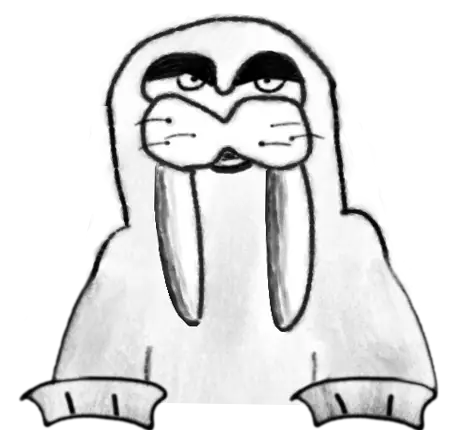January 17, 2018
The Grotesque in Literature
Note: the following article on the concept of the grotesque in literature is a modified excerpt (pp. 47-48) from my doctoral dissertation, “Time is Everything with Him”: The Concept of the Eternal Now in Nineteenth-Century Gothic, which can be downloaded (for free) from the repository of the Tampere University Press. For a list of my other academic publications, see here.
What Is the Grotesque in Literature?
The grotesque in literature can be broadly defined as “a written form of expression which described that which could not be controlled by reason, was unnatural, and arose in opposition to the classical imitation of ‘beautiful nature’ and the rationalism and optimism of the Enlightenment” (Perttula 2011, 22).
However, it is important to underline that the concept of the grotesque underwent an important shift during the Romantic period, which “highlighted above all the dark, fearsome, and demonic nature of the grotesque”, though its comical aspect was still present (Ibid). The merging of what appear to be incongruent elements – comedy and horror, natural and unnatural, and so on – is precisely where the affective power of the grotesque lies. As Kayser argues:
The distortion of all ingredients, the fusion of different realms, the coexistence of beautiful, bizarre, ghastly, and repulsive elements, the merger of the parts into a turbulent whole, the withdrawal into a phantasmagoric and nocturnal world … all these features have here entered into the concept of the grotesque. (1981, 79)

Kayser reaches this conclusion examining the works of Edgar Allan Poe, arguably an important figure in this post-romantic form of the grotesque, but in terms of evolution in the concept of the grotesque, Victor Hugo’s contribution should be emphasized.
Whereas before him the grotesque was generally seen as something not existing in nature, Hugo, in his 1827 “Manifesto of the Romantic Movement”, introduced the idea that the grotesque was a part of natural reality (Perttula 2011, 22). The presence of something seemingly unnatural underlines the ambiguous placement of the grotesque between reality and fantasy, an element which is in fact visible also in the Bakhtinian grotesque, when its scope is examined more closely.
The Bakhtinian Grotesque
The examination of the carnival grotesque reveals that Medieval carnival festivities were “a second world and a second life” (Bakhtin 1984, 6), which functioned as a parallel, a reflection of the canonical one.
Thoughts, expressions, and criticism that could not be voiced in the everyday life, could be revealed in this medieval version of virtual reality. The ontological status of the carnival grotesque is ambiguous, being at the fringe between reality and fantasy.
As such it represents life, although distorted in ways that express hidden meanings. Other distinctions and separations also disappear, as everyone is at the same time actor and spectator, writer and reader, with individuality being scorned at and collectivity being elevated (Ibid, 7).
The Ambiguity of the Carnival Grotesque
The ambiguity of the carnival grotesque, as well as the undermining of personal uniqueness in favor of collective expression, can also be seen in the ways the body is distorted.
As the grotesque body becomes a central theme, its exaggerated appearance becomes a mechanism that shatters individuality and facilitates totality, as it expresses “the collective ancestral body of all the people” (Bakhtin 1984, 19). It is important to notice the temporal element in these manifestations, as the grotesque body appears as something that not only nullifies space and borders, but also time. In the concept of the grotesque are hidden multitudes of temporal innuendos, and especially a sense of historical awareness and a conflict between cyclical time and linear evolution:
[T]he grotesque, including the Romantic form, discloses the potentiality of an entirely different world, of another order, another way of life. It leads men out of the confines of the apparent (false) unity, of the indisputable and stable … [T]here is the potentiality of a friendly world, of the golden age, of carnival truth. Man returns unto himself. The world is destroyed so that it may be regenerated and renewed. While dying it gives birth. (Ibid, 48)
The last phrase is particularly noteworthy, as it describes a form of eternal now. Past and future fuse into a Hegelian “becoming”, which contains both “being” and “nothing”, since at the indefinably small present moment that something “becomes”, it passes from nothingness to being.
The Dichotomy of the Grotesque in Literature
It becomes apparent that a certain dichotomy seems to emerge between the grotesque expression, on the one hand, and the “real” on the other. However, in actual fact, the dichotomy only seemingly appears as such. There is no real distinction, as the grotesque serves as a parallel of the “real”, by amplifying those expressions of the latter that could not have been manifested otherwise.
As Kayser explicates, the grotesque lies ambiguously in regard to reality as an expression that is simultaneously both of this world and outside it, with its ambiguity and its affective power stemming from the realization that “the familiar and apparently harmonious world is alienated under the impact of abysmal forces, which break it up and shatter its coherence” (Kayser 1981, 37).
Works Cited
Bakhtin, Mikhail. Rabelais and His World. Translated by H. Iswolsky. Bloomington: Indiana University Press, 1984.
Kayser, Wolfgang. The Grotesque in Art and Literature. Translated by Ulrich Weisstein. New York: Columbia University Press, 1981.
Perttula, Irma. “The Grotesque: Concept and Characteristics”. The Grotesque and the Unnatural. Edited by Markku Salmela, and Jarkko Toikkanen. Amherst: Cambria Press, 2011.
Read more: Angelis, Christos. “Time is Everything with Him”: The Concept of the Eternal Now in Nineteenth-Century Gothic. Doctoral Dissertation. Tampere, Finland: Tampere University Press, 2017. Available from the repository of the Tampere University Press.
I don't show you ads or newsletter pop-ups; everything is offered for free. Wanna help support a human internet?
